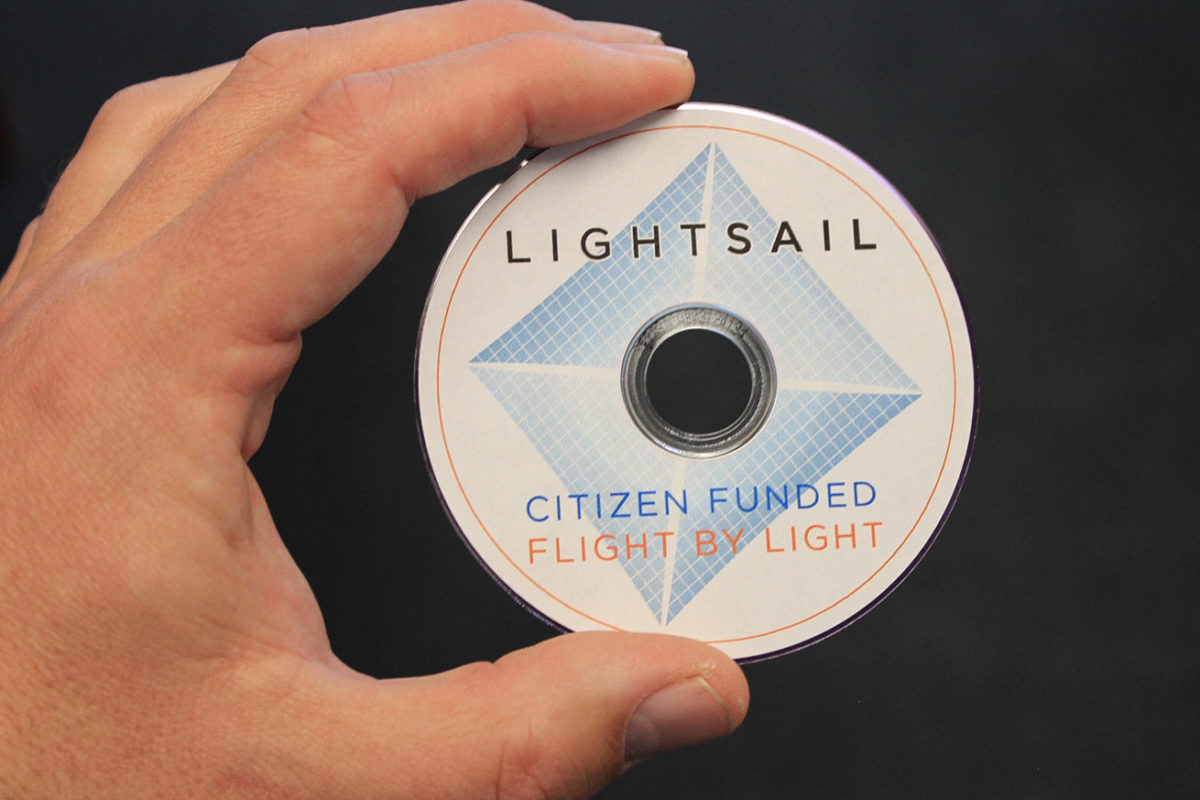Jason Davis • Mar 29, 2016
Selfies, messages and names delivered for LightSail 2 flight
A miniature DVD containing images of space fans and names of Planetary Society members and supporters is ready to fly in space. The disc will be installed aboard the Society's LightSail 2 spacecraft, a solar sailing CubeSat that will raise its orbit using solely the pressure of sunlight.

"The Planetary Society has a long tradition of sending messages from Earth, including people's names, to space," said Dr. Bruce Betts, the Society's director of science and technology. "We are excited that this time we get to send them on our own spacecraft."
Starting last year, space enthusiasts were encouraged to post images and messages on social media as part of a "Selfies to Space" campaign. Those posts and submissions were downloaded for inclusion on the DVD, which also includes a Planetary Society membership roster. Additionally, the disc contains a list of all LightSail program Kickstarter backers. During the test flight of LightSail 1, the Society raised $1.2 million for the program's second mission, LightSail 2. All contributions of a dollar or more were added to the DVD.
Riki Munakata, LightSail's integration lead for Ecliptic Enterprises Corporation, officially took possession of the mini-DVD at The Society's Pasadena, California headquarters. Ecliptic is the LightSail's prime contractor.
The 8-centimeter disc will be mounted on the outboard side of the spacecraft's avionics section and covered with a thermal blanket, which helps regulate temperatures inside the tiny CubeSat. LightSail 2 measures 10 by 10 by 30 centimeters, and will be installed in Georgia Tech's Prox-1 spacecraft. Together, the duo will hitch a ride to orbit aboard the first operational flight of SpaceX's Falcon Heavy rocket. A launch date has not been finalized.

Once in orbit, Prox-1 will deploy LightSail 2 and track it using visual and thermal imagery. After deploying its 32-square-meter Mylar sails, LightSail will spend a month solar sailing, raising the highest point of its orbit by about a kilometer each day. The spacecraft, along with the mini-DVD, will eventually reenter Earth's atmosphere.
Since 1996, The Planetary Society has sent a member roster to space aboard 19 different spacecraft, including New Horizons and the Mars rovers Spirit and Opportunity. While LightSail's mini-DVD is a simple, off-the-shelf data disc, the Society has in the past provided silica-glass DVDs to spacecraft that require intensive sterilization before being sent to potential life-harboring habitats like Mars. Those DVDs were also designed with potential future astronaut recovery in mind.
The Society has also previously added messages to spacecraft using technologies like microchips. This technique was used for Japan's Akatsuki probe, which is now orbiting Venus. LightSail's original design allocated mounting space for a miniature DVD, so the team decided to stick with that approach.

Let’s Go Beyond The Horizon
Every success in space exploration is the result of the community of space enthusiasts, like you, who believe it is important. You can help usher in the next great era of space exploration with your gift today.
Donate Today

 Explore Worlds
Explore Worlds Find Life
Find Life Defend Earth
Defend Earth

